Memory, memory consolidation and grandmother's neurons
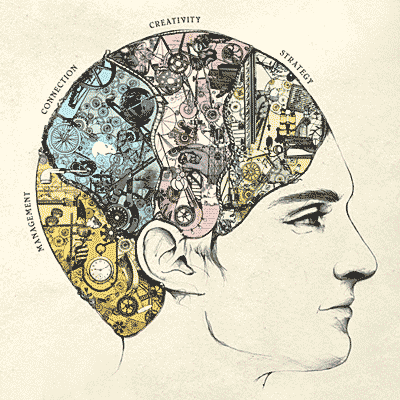
The first question that arises before the researchers of the nervous system and cognitive processes is what is memory? What is memory in the biological aspect? How does memory appear at the level of an individual neuron? And in what form is information stored in the nervous system?
And now we will answer these questions.
Table of contents
1. Simulator of the nervous system. Part 1. Simple adder
2. Simulator of the nervous system. Part 2. Modulated Neuroelement
3. Simulator of the nervous system. Part 3. Associative Neuroelement
4. Memory, memory consolidation and grandmother's neurons
5. Modeling emotions or electronic sense of novelty
6. Amazing cerebellum
7. Structure and starting brain settings
')
What is memory in the biological aspect and at the level of an individual neuron? It has long been the opinion in neuroscience that memory is associated with changes in the states and strength of synapses, as well as the sensitivity of the neuron itself. We talked about how changes in these states can occur in the last issues, when we talked about habituation and sensitization on the example of the Aplysia mollusk and also when we studied the mechanisms of formation of conditioned reflexes based on an associative neuroelement. Such a representation of memory gave rise to the concept of a connection, which is a complete description of all connections in the nervous system, taking into account the quality and properties of these connections. You can say that you, your personality is your connection. If you once have the opportunity to completely repeat your connection, you will get an identity identical to you with the same memories and skills.
Sebastian Seung: I am my connection (2010)
In what form is information stored in the nervous system? If we talk about the nervous system of the mollusk, then everything is limited by the settings of the synapses in the chains of neurons of already existing reflexes. But if you turn to the nervous system of mammals, then it has a tool that allows you to form reflexes that were not given in an animal from birth. Reflexes in the nervous system are represented as reflex arcs or chains of neurons along which nervous excitement is successively transmitted. It is possible to imagine that chains of neurons form entire schemes of paths along which excitation propagates, some paths are very large, like other highways, more detailed paths, and all this is subject to certain rearrangements and changes.
When we talk about reflex arcs, we see a sequential chain of single neurons, but in fact it is common for the central nervous system that many neurons are immediately involved in a reflex arc, and these transmission chains consist of a whole array of cells. Although, in fact, each cell from this array contains almost the same information, and by removing not one, but entire regions of the cells, you can save the reflex to which they belonged. This may seem irrational from the point of view of saving space and resources, but from the position of reliability of information security this is justified. After all, the nerve cell can be subject to death due to various adverse conditions, hypoxia, nutritional deficiencies or toxic poisoning and it is not desirable that the death of a single cell leads to the possible loss of important information for the body. It turns out that it is impossible to reliably estimate the amount of information operated by the brain on the number of neurons and the connections between them.
What is the nature of varying degrees of memorization depth? Physiologists have long been allocated two types of memory, temporary or operational memory and long-term memory. That is, in some situations we memorize information for a certain short term and if we do not return to it, then we forget it. And in other situations, we memorize information for an unlimited period, if this information is important for us, then it can be saved even immediately. Evolutionarily, these two types of memory are justified by the fact that the body does not need to store everything that happens to it, especially if this information is not important for survival and success and is never repeated, because storing information requires a waste of resources.
The transfer of information from temporary memory to long-term memory is called memory consolidation. There is a lot of research on this topic, and in my work on the model I tried to substantiate the presence and simulate various depths of memorization. And studying the materials of these studies, I came to the conclusion that perhaps we are dealing not with one type of memory consolidation, but with at least two.
The first is consolidation at the physiological level, these are experiments in which, for example, chicks teach some reflex and if nothing happens, then the reflex will be remembered, but if there is an electric shock or toxin for twenty minutes, the reflex will not be saved in mind. This means that during these twenty minutes there are processes associated with the preservation of information in memory that can be violated, thereby preventing this preservation.
Changes in the cell structure do not occur instantly during its training, it takes some time associated with a number of chemical reactions and transformations, the production of necessary proteins and the growth of new processes. But the result of training is sometimes almost instantaneous, we just need to hear some information and we already have it and can operate it. Presumably this is due to the fact that the nerve cell has a certain reserve to change, for example, additional vesicles with a mediator can be stored in the synapses, which will be allocated only in terms of training. But after training, to save information, an increase in the synapse and the general content of mediators in it will be required, taking into account the reserve for possible training. In this case, the synapse is labeled with special proteins, and a certain complex cascade of chemical reactions is launched, which leads to the synapse growth. Violation of the course of this complex cascade of chemical reactions during the time required for this and leads to impaired memorization.
But in the computer model there is no need to reflect the physiological consolidation of memory, because we can carry out all the changes with virtual synapses instantly.
The following form of memory consolidation is an example of the fact that information repeated several times is absorbed for a long time, and information that does not have an emotional color and was presented once or a rather small amount will be forgotten over time. I call this type of consolidation hierarchical, let's consider this type of consolidation by the example of mastering the usual conditioned reflex and using the model.

In the previous part, an example of how a conditioned reflex is formed on the basis of associative neuroelements is demonstrated. Now let's look at how the conditioned reflex is formed at the level of the central system. Usually, unconditioned reflexes have representations in several areas of the nervous system, first this is representation in the area of the spinal cord, if we move further along the hierarchy, then representations in some ganglia, then in the ancient brain, for example, in the hippocampus and finally, representation in cortex.

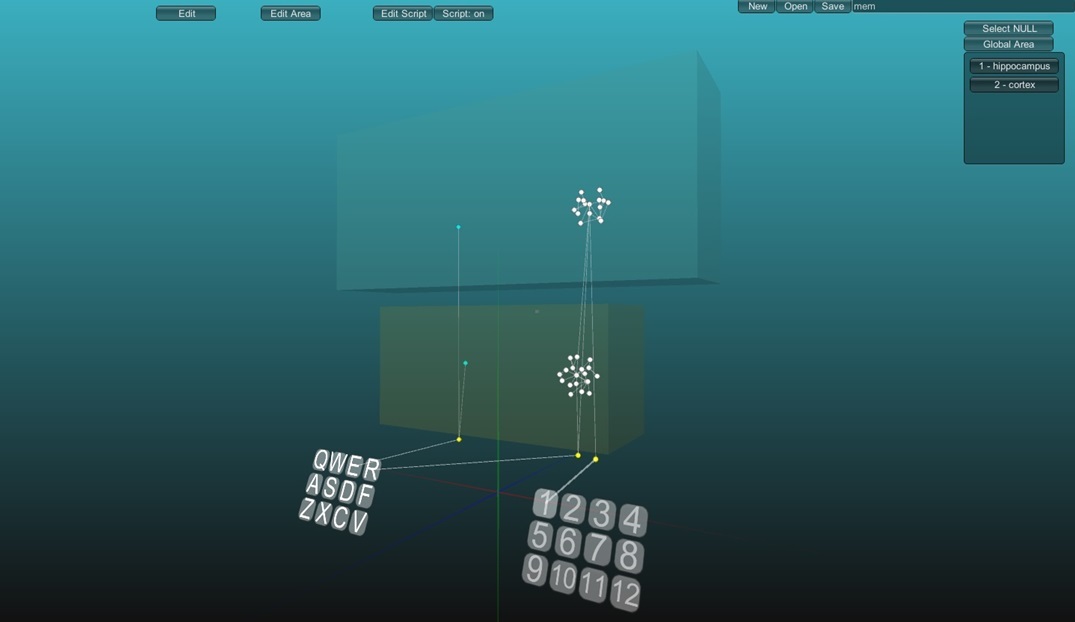
On the model, you see two selected areas, they are isolated, i.e. neuroelements belonging to these areas do not affect each other, unless of course they are directly connected by synapses. I have conventionally designated these two areas as the “hippocampus” (hippocampus), the area below and the “cortex” (bark) area above. There is also a reflex with the title “R” leading to the reflex response “1”. This reflex has two representations in the hippocampus and the cortex, these are two groups of white neuroelements. And also there are two receptor neuroelements associated with the “E” receptor in each region, these neuroelements are indifferent, and their activation will not lead to any answer, but will create random activity. The main thing is that the neuroplasticity for these two areas is different, in the area designated as the hippocampus plasticity is higher than in the area of the cortex.
If we activate the reflex with the heading “R” and the unconditioned stimulus “E”, approximately in the same time interval, the formation of a new reflex arc will occur, but this will happen most quickly in an area with high plasticity.
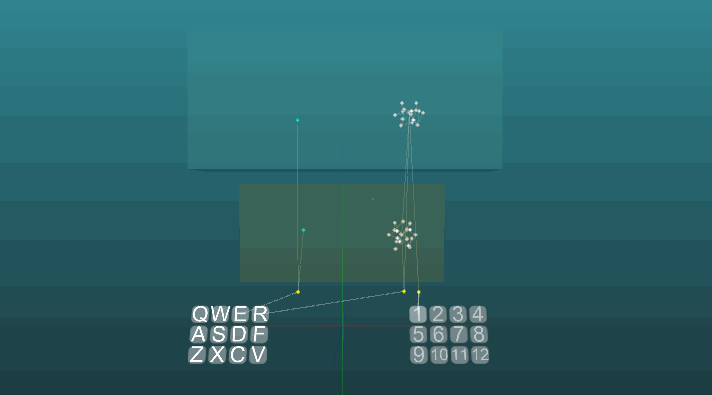
A reflex formed only in an area with high plasticity will be fully functional, but may be lost because under the influence of other stimuli neurons can be retrained. The hippocampus is much smaller than the cortex, but almost all of the representations are present in it, as in the cortex. The need for the formation of new connections all the time forces to use cells that have already participated in the formation of reflexes.

If we continue training with the combination of stimuli “E” and “R”, then after a certain number of repetitions a reflex arc will form in an area with low plasticity.
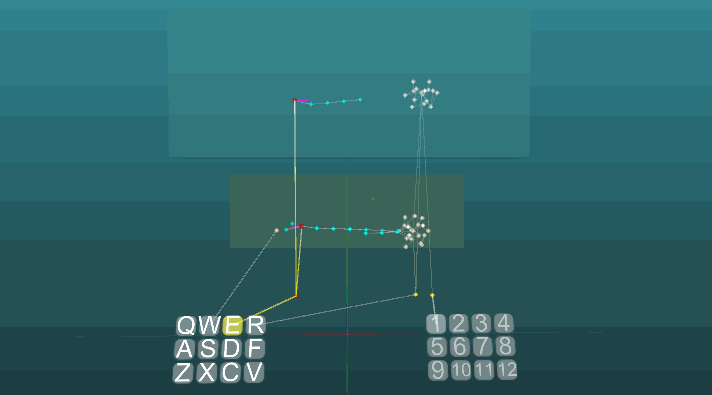
Now the reflex is protected more reliably, even if it disappears from an area with high plasticity, it will still be executed.
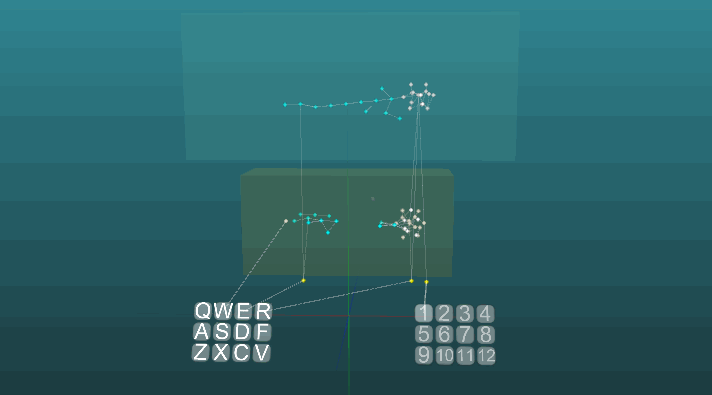
Of course, retraining of neurons in areas with low plasticity is possible, but this will require more time and effort.
Thus, there are two stages of memorization: before the formation of a reflex in the cortex and after. Preserving a copy of the reflex, not only in the hippocampus, but also in the cerebral cortex is a hierarchical memory consolidation.
But how then is the situation with information that is remembered immediately and for a long time, usually such information is accompanied by any emotional experiences? For example, it is enough for a person to burn himself once from a pot on a stove to remember this all his life.
Our pain receptors are associated with a brain region called the amygdala or amygdala. The amygdala controls the region of the nervous system "blue spot", which consists of norepinephrine neurons. The axons of these neurons have endings in all areas of the brain; their task is to deliver norepinephrine as many cells as possible if necessary.
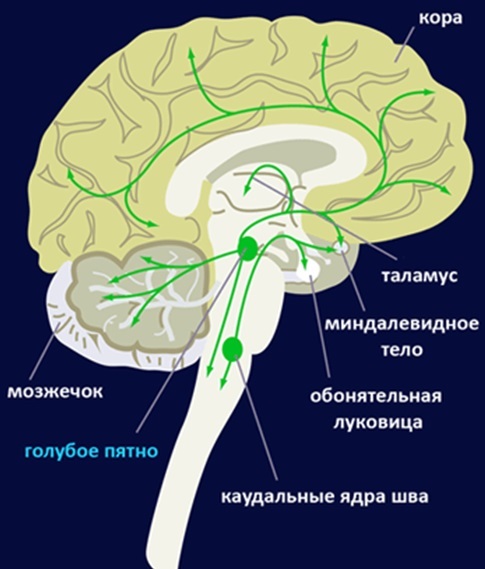
In our case, norepinephrine is a signal for increased neuroplasticity. This is a kind of “now print” command, and under the influence of norepinephrine, nerve cells try to make changes in themselves as quickly as possible. And accordingly, when the actions of norepinephrine cease the cells return to their working state, keeping all the changes that occurred with them.
So let's consider this in the model.
Areas in the program not only logically separate and isolate neuroelements, but it is also possible to customize some scenarios of interaction between these areas.
The organization system in the model can be described as something like a hypernet (network of networks) from the lectures of Konstantin Anokhin. But higher level network objects are different areas of the brain. The nature of their interaction in the system is special, the activity of one region can lead to the inhibition of all neurons of another, or have a modulating nature, or influence plasticity. The feeling of fear (activity of the amygdala) leads to an increase in the sensitivity of the neurons of the motor cortex, i.e. modulation occurs to reduce the threshold of neuron activation. Therefore, when fear engulfs us, we can quickly run away from danger, our muscles do not become stronger at the same time, it just takes less internal motive to action.
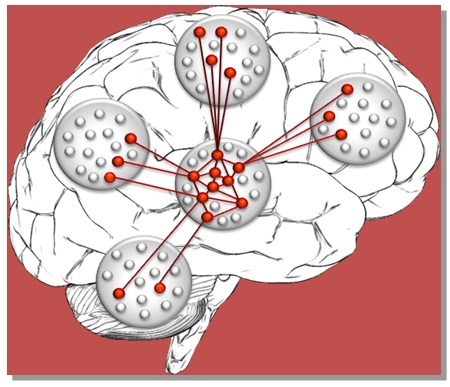
There are grouped neuroelement networks, as well as these groups can be organized in the network with their own interaction characters. In this case, there is a scenario in which, when an activity occurs in an area called “amigdala” (amygdala) in the “cortex” area, there is an increase in plasticity by two seconds.
Without activating the tonsil:

With tonsil activation:
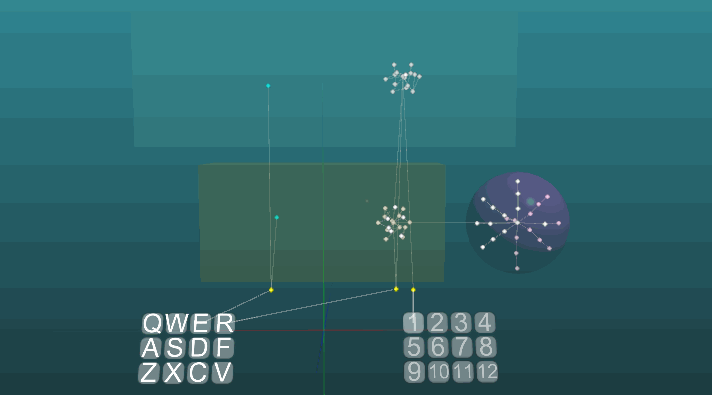
Thus, it turns out that, under stress, learning occurs in the cortex as quickly as in areas with high plasticity.
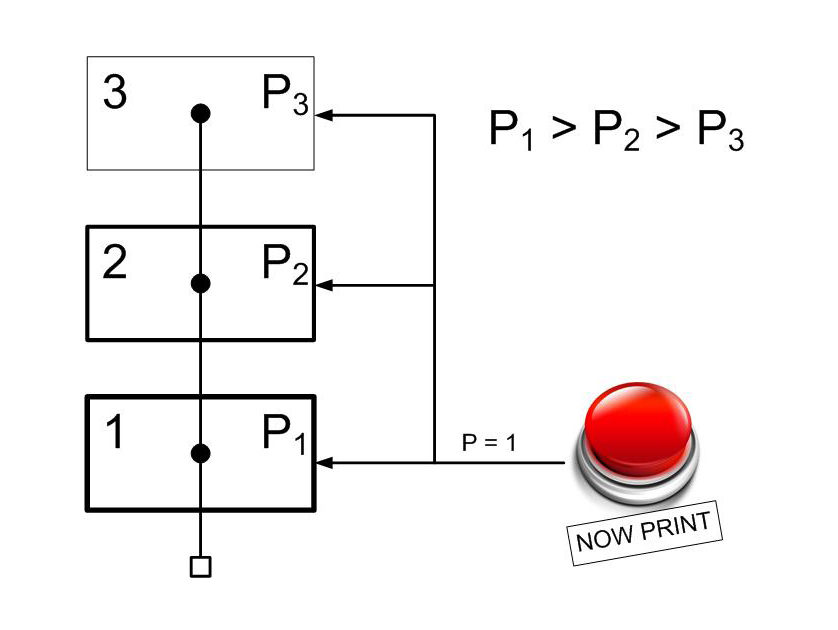
The hierarchical memory system can be represented as follows. There are several isolated areas, in each subsequent plasticity will be less, which means that each next area will be less affected by changes. In each such area, there will be a representation of the stimulus. And it will also be possible to control the speed of memorization through signals that lead to a short-term change in plasticity.
On the one hand, we have a kind of information filter that saves better information that is more often repeated, on the other hand, the ability to instantly memorize important information for the body.
Recently I stumbled upon a message: Stimulation of the blue spot taught the mice “long” memory
Images
It is wrong to consider human memory only on the basis of the simplest conditioned reflexes, for many it may seem very primitive with regard to the information that a person can operate on. And therefore we will talk about such a concept as an image, and how images are formed at the level of nerve cells or neuroelements.
The system of formation of images in the brain is associated with the phenomenon of specialization of neurons observed in biology. When studying the brain, it was found that some neurons react selectively to a certain type of stimulus, that is, a certain group of neurons in your brain will be activated when you see or think about an animal, there are also groups that will only respond, for example, on your grandmother's face. There is even a name for this phenomenon of specialization of neurons "grandmother's neurons."
Let's consider the mechanism for obtaining specialization by neurons on a model.

We have a receptor field of 12 receptors (Q, W, E, R ... V), all receptors are the same, are in equal conditions. And each receptor has a representation (receptor neuron) in a group of interconnected cells located in a plane, just as it is organized in a fragment of the cortex processing signals from the senses. This will be the primary processing area and therefore the neuroelements of this area have very high plasticity (P = 1).
If you activate, for example, three receptors (Z, X, R) from the receptor field, then the very same principles of attraction of arousal that underlie the formation of conditioned reflexes lead to the fact that the excitation will converge in one place. Moreover, the level of activating effect on the neuroelement in this place will be higher because the activating signals come from different sides almost simultaneously. Thus, the specialization of neurons is automatically formed, in this case, the neuroelements that react to the complex stimulus "Z + X + R" are determined.
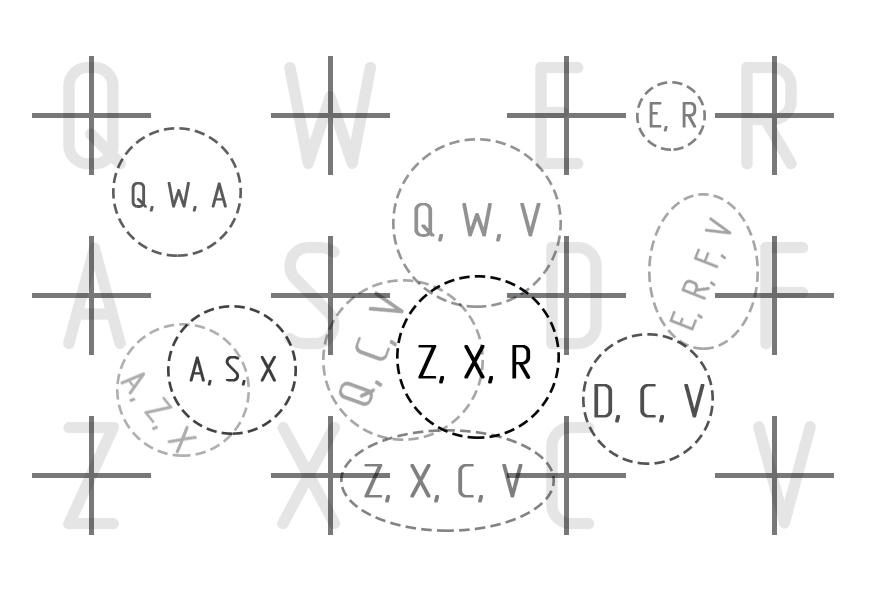
And of course, it can be noted that this system does not work very accurately for the formation of image areas. The areas of images can intersect, and it is also possible that the same area can be attached completely different groups of stimuli. And such inaccuracy in the brain can have a rather positive nature. Indeed, in image recognition, accuracy can only interfere, and it also reveals the potential for creativity, because combining previously incompatible or seeing something else in the image is possible only because these images are not so straightforward and do not have clear boundaries. It also explains why human perception tends to be deceptive.
But in order to isolate these areas of increased level of activating effect, it is necessary to add another group of neuroelements that will be activated only if such an increased effect is obtained. We will talk in detail about the structure of the crust and the organization of the crust in this issue, as well as how to improve the image formation mechanism in a qualitative way.
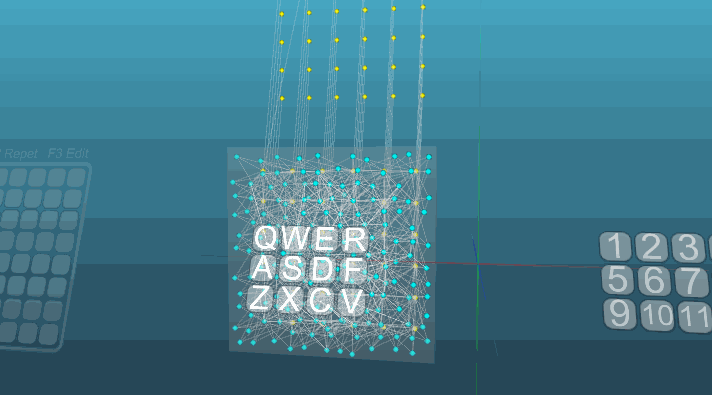
Now let's connect a hierarchical memory system and an imaging system.
Excitement from one stimulus before going to the next level of treatment can go various ways. So the way that excites selects is determined by the influence of other stimuli. This path determines which representation of a higher level the excitation will go to and how further along the hierarchy. Given the difference in plasticity at the levels, the images at high levels will be more stable, namely, if the complex stimulus is activated not incomplete or noisy, then the area that will be more typical for this complex stimulus will still be active. Moreover, the hierarchy in some cases is not strict, some signals from receptors can be duplicated and jump levels.
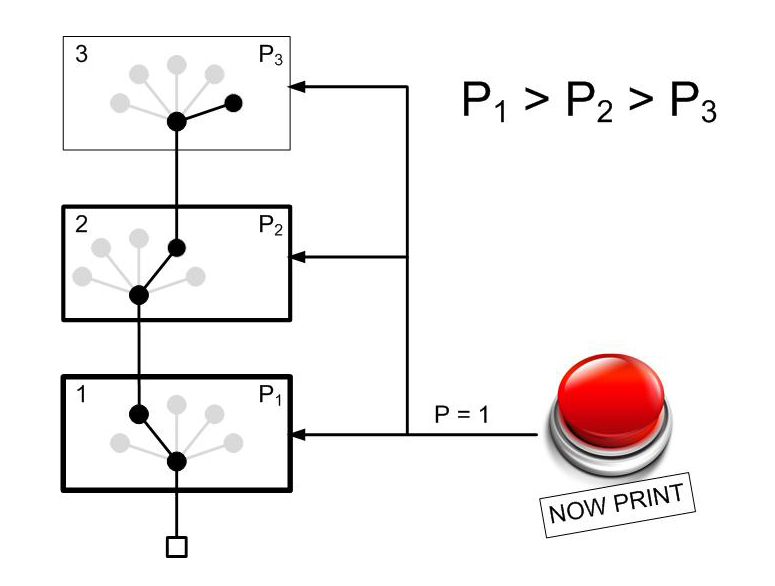
Such a memory structure is like a tree, for example, at the first levels we can identify neurons that will react to all faces of people, higher in the hierarchy we will find neurons that react to faces of familiar people or those we have seen repeatedly and the last levels will reveal faces of relatives whose faces we are very familiar with. The face of our grandmother, which we can identify even in a very distorted, incomplete or noisy form, because at high levels the plasticity is very low and an inaccurate choice of the “branch” will still lead to its full activation.
This memory structure explains the reason for the high speed of information extraction, the excitation from the receptors simply passes through all layers of processing, affecting each other, these signals determine the path through which the excitation will come to the right groups of neurons. There is no sorting of information here and there are no comparison operations with any reference information, etc. Evolution followed the path of speed, not accuracy, although the accuracy of perception was achieved by increasing the receptor fields and special ways of organizing the brain.
LTP
Reasonings about memory would not be complete if we do not touch on the topic of long-term potentiation. This effect is due to the fact that when a nerve cell is exposed to a strong activating effect, its sensitivity increases for a while, and the time of this change in the cell can last from several minutes to several weeks. Mostly this effect is manifested in large pyramidal cells of the hippocampus, although it can be observed in other areas but in a lower concentration.
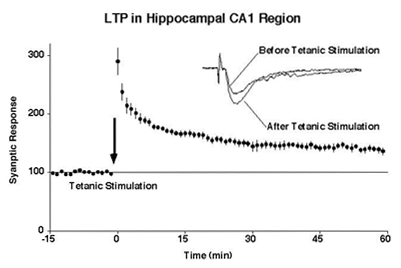
Under the action of enhanced exposure, a certain cascade of chemical reactions is triggered in the cell, which leads to the formation of a postsynaptic membrane of additional receptors, which increases the sensitivity of the cell. Let's imagine how this will be implemented in the model.

Consider a summation scheme in neuroelements that represents a vessel filled with a mediator, from which this mediator is continuously wasted.If the level of the mediator in the vessel reaches the bar “A”, then the neuroelement is activated. If the level of the activating effect manages to reach the bar “B”, then not only the activation of the neuroelement will occur, and in addition the main activation threshold “A” will decrease to the level “C”, these changes will be temporary.
This feature in the work of some cells of the hippocampus goes against the principles of habituation in the nervous system, but this feature is more important. Thanks to her, the body can remember what happened to him a few minutes ago. If you close your eyes and spend some time in silence, then you don’t even need to open your eyes to recollect information about where you are and what events happened before. The amazing thing here is that there are no stimuli that will activate the reflex arcs, leading to the neurons that are responsible for this information.
In the process of activity in the hippocampus, there is a sort of marking of areas and neurons by means of long-term potentiation; those areas that are responsible for active images are marked. As a result, you can easily return to images that have recently been activated even through a weaker effect.
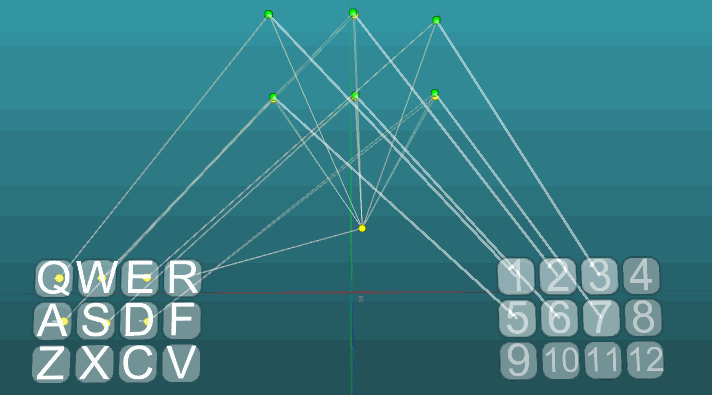
Imagine that there are groups of neurons responsible for images of places, for example, images: "work", "house", "street", etc. Then, while in the workplace, we can get a lot of visual, auditory, tactile images and signs indicating where we are. This leads to the fact that neurons associated with the image of the place will be marked with long-term potentiation. Now, at a certain time interval, while long-term potentiation acts, a small stimulus from the root image of the place is enough for the neurons of the corresponding image to be activated.
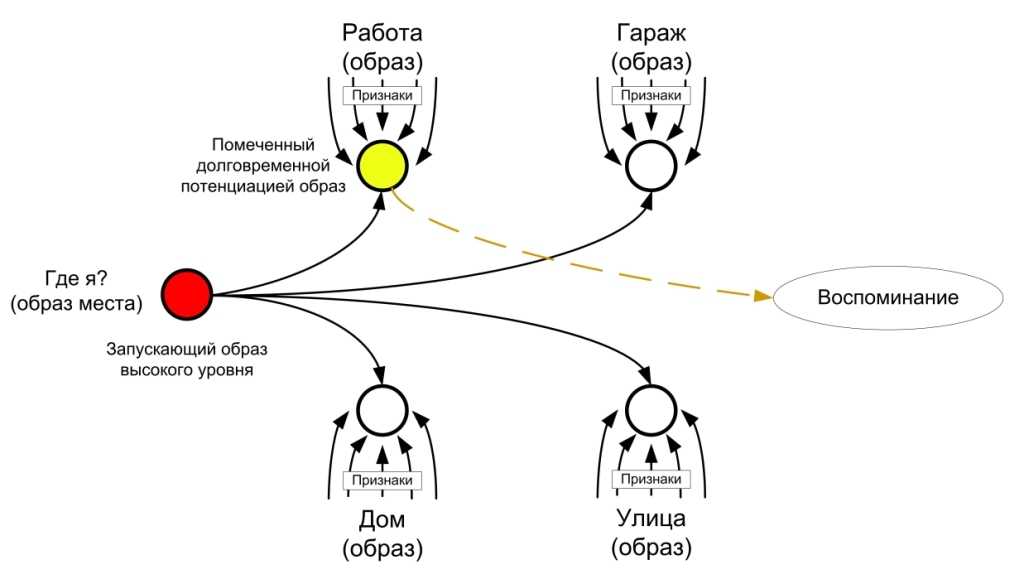
Long-term potentiation allows you to remember the information that the body operated on recently, but the information was not new or significant. And also increases the working memory time.
The obtained theory of memory, in my opinion, is very simple and concise, and it follows from the foundations laid down in the work of neuroelements.
In the next issue we will talk about emotions, and I hope to convince you that the most complex emotions in the mind of a person will be available for electronic brains.
Nervous System Simulator free download
Source: https://habr.com/ru/post/397377/
All Articles